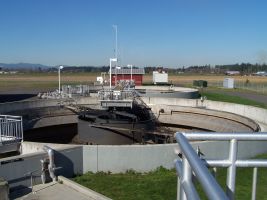Centralia, WA, USA
The city of Centralia is located in southwestern Washington, halfway between Seattle and Portland, Oregon. Centralia’s wastewater treatment plant cleans sewage and water so that it can return to the environment without the risk of contamination. Wastewater treatment plants such as this one, remove solids and pollutants, break down organic matter and restore the oxygen content of treated water. Typically this process is performed by connecting the city’s sewer system to homes, commercial buildings, schools and street grates delivering wastewater and solids to a treatment plant’s collection tanks and basins. To ensure that the treating process is done in a safe and environmentally friendly manner, there are strict state and federal requirements that must be followed.
The City of Centralia Wastewater Treatment Plant consists of 24 pump stations which collect and transport sewage to the actual plant. These pump stations discharge to the sewer system using force mains stretching approximately 7 miles, consisting of pipelines ranging from 2-1/2” diameter to 18” in diameter. This wastewater treatment plant provides primary and secondary treatment for the surrounding city. After being thoroughly processed and treated, the water is then disinfected using ultraviolet light and discharged into the Chehalis River. This wastewater treatment facility produces a product, which is considered completely safe for public use, including the watering of residential property.
In the summer of 2015, work had been contracted out for an addition to the already existing wastewater treatment plant. The anchor bolts required for this project were unique in that they required a forged heavy hex head pattern and were specified as meeting the ASTM F1554 Grade 55 requirement. The diameters required for the various anchor bolts ranged from ¾” to 1¼” and were approximately two to three feet in length. When completed, the anchor bolts were manufactured from scratch as promised and were delivered to the jobsite as needed.


